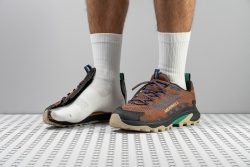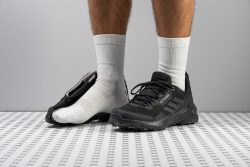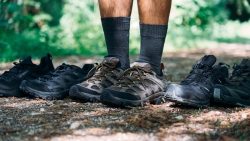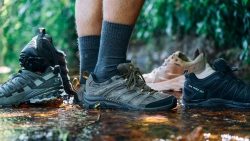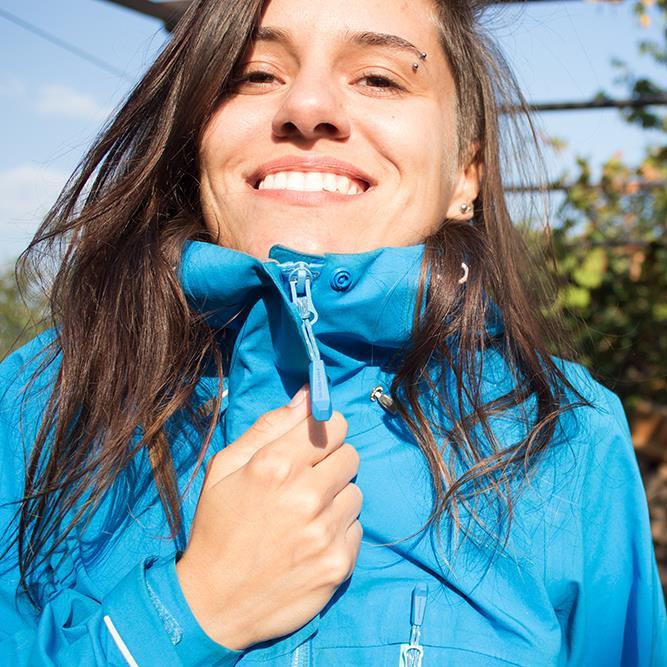5 Best Plantar Fasciitis Hiking Shoes in 2025
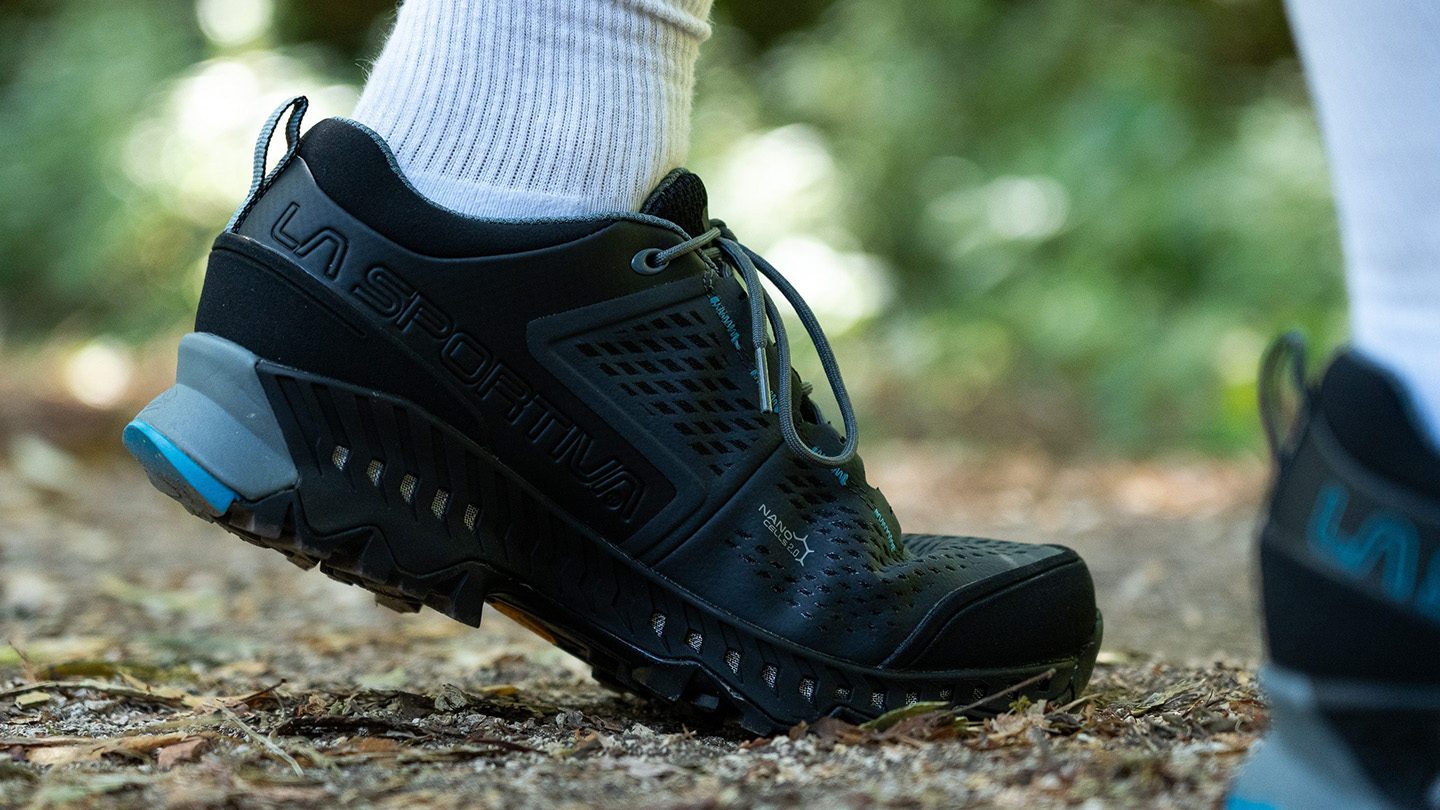
We buy shoes ourselves. We earn commissions when you buy through us, at no extra cost. Why trust us
If 1 in 10 people experience plantar fasciitis, that means you must be the 1. Many runners give NSAIDs a try before consulting a specialist or paying attention to their shoes. We advise against that! See a specialist first.
If you're curious about how running shoes might be able to help, here we offer an extensive overview of all the features that bring stability and a superb lockdown to your heel and foot. This is what we prioritise when dealing with plantar fasciitis.
If you're in a rush, look at our top picks in various categories. For each, we give an elaborate explanation on why it might help with plantar fasciitis!
How we test plantar fasciitis hiking shoes
First, we buy all the shoes with our own money. We have no sponsorships or any other contracts with the brands. We also don't have brand ambassadors on our team.
Second, we wear test all the hiking shoes on our hikes. We give them hell! Be it cold or hot, wet or dry, muddy or rocky, there's no excuse for any pair not to be tested on our hikes.
Third, we take the shoes to the lab where we cut them into pieces and use different tools and instruments (like durometers, callipers, smoke machines, Dremel, etc.) to describe each hiking shoe with 20+ parameters.
Fourth, we publish everything. Not just as a list of all the lab data, but a) in the comparison table so you can compare shoes of your interest and b) next to the averages and all the other results so that you can have a context and understand where each hiking shoe actually lies in terms of performance.
Best hiking shoes for plantar fasciitis overall











































What makes it the best?
Our lab results backed up the stable yet comfortable experience we had while exploring the mountains with the KURU Ridge Motion, making it our top hiking shoe for people dealing with plantar fasciitis. It feels exceptionally supportive, especially for those with foot pain, even including a unique KURUSOLE in its protective midsole.
We felt the solid support from the shoe, delivered by the high torsional rigidity we discovered in our manual assessment. It had no give to twisting, earning the maximum 5/5 torsional rigidity score, preventing any ankle rolls or excessive lateral movements that can lead to more foot pain.
The midsole is stacked at 38.6/26.5 mm, with a steep 12.1 mm drop that puts less strain on the heel and Achilles. It includes the brand’s patented heel cup called KURUSOLE, which adjusts to each person’s unique biomechanics.
The grip it showed on mixed terrains is undeniable, further enhanced by the 3.7 mm lugs. We could tackle rain and puddles without worries of slipping or getting wet, thanks to the watertight upper that scored 1/5 in our breathability test. However, its leather upper may cause overheating when the temperatures rise. Best to use this shoe in cold weather.
Pros
- Orthopaedic foot support
- Comfortable in-shoe experience
- True to medium width
- Excellent grip on varied terrain
- Fantastic lateral stability
- Tough nubuck leather upper
Cons
- Only moderate shock absorption
- Heavier than average
- Outsole and inner lining lack durability
Hiking shoes for plantar fasciitis with the best shock absorption























































What makes it the best?
The On Cloudhorizon Waterproof is a testament that a well-cushioned platform can make us feel surefooted. Our lab tests reveal a wide and sturdy base that stabilised our strides and a springy, soft foam that comforted our feet during our hikes. We award this maximalist the top spot for shock absorption among plantar fasciitis hiking shoes.
This On’s thick foam kept us isolated from the ground, confirmed by our calliper with a massive stack height of 39.4/29.2 mm. Our arch and heel enjoyed its gentle touch, with an impressive 126 SA score, proving it offers 21.2% better impact protection than average. Adding to its comfort is the pleasant responsiveness of the CloudTec technology.
Despite its plush feel, Cloudhorizon Waterproof features a vast, structured landing area, ensuring our feet remain centred. Our calliper shows the midsole is a massive 116.3/89.1 mm vs. the 111.3/87.9 mm average. Plus, it doesn’t give in to twisting without a fight, evidenced by its 4/5 torsional rigidity rating in our lab. This stiffness effectively avoids ankle rolls.
Unfortunately, the shallow 2.3 mm lugs are not aggressive enough to tackle challenging trails. We advise reserving this pair for easier terrain or walks around town.
Pros
- Effective waterproofing
- Abundant cushioning and impact protection
- Lively and responsive ride
- Amazingly light for its stack and waterproofing
- Great as a city-to-trail shoe
- Good stability for moderate terrain
- Comfortable in-shoe feel
- True to size and fit
Cons
- Not for serious hiking
- Lacks durabiity for the price
Best lightweight hiking shoes for plantar fasciitis
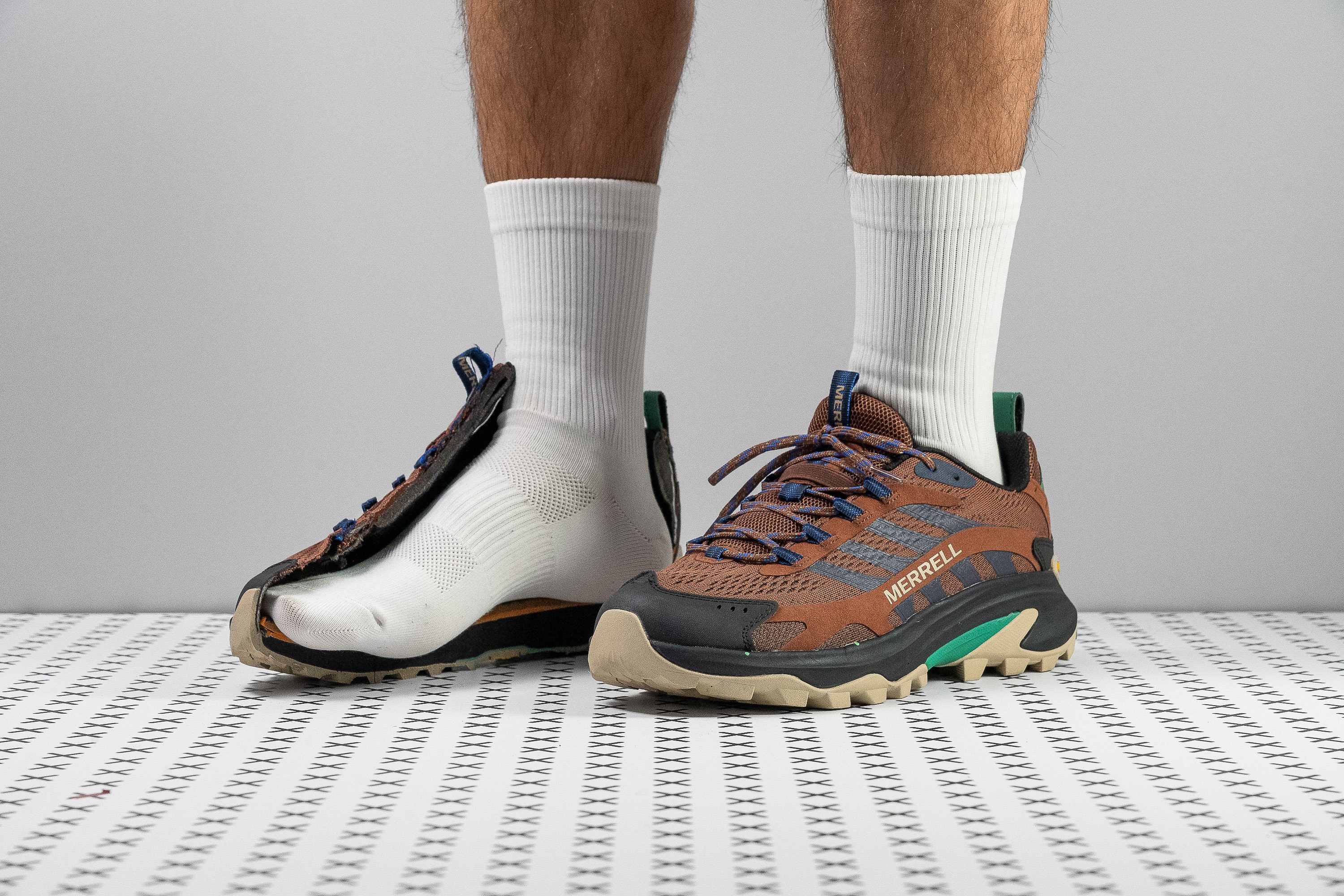
























































What makes it the best?
We’re in awe of the cushioning and stability the Merrell Moab Speed 2 brought to our mountain adventures while maintaining a quick and agile feel. It rides more like a trail shoe, and our lab backs up it’s a breath of fresh air on foot, making it our top lightweight hiking shoe for those with plantar fasciitis.
Our scale confirms the weightlessness we experienced, at only 11.6 oz (329g), 12.3% lighter than the average hiking shoe. The midsole also has a responsive kick, contributing to its fast yet effortless ride.
Every landing is pure bliss and we never experienced any foot pain. The stack height is an above-average 38.8/23.8 mm and has a durometer reading that’s 31.4% softer than average, relieving our arches and heels from the pressure of standing all day.
Despite the plush cushioning, we never lost control of our footing since the FlexPlate in the midsole stabilises our strides. Our manual assessment shows its effect by getting a high torsional rigidity of 5/5. This stiffness ensures our feet remain in their proper place to avoid injuries.
However, because of its soft foam, we recommend finding a more supportive hiking shoe when carrying heavy backpacks on multi-day hikes.
Pros
- One of the lightest hiking shoes
- Plush and abundant cushioning
- Great support and stability
- Perfect grip for moderate terrain
- Excellent durability
- Breathable for summer
- Cosy step-in feel
- Two loops for easy on-off
Cons
- Frail inner lining
- Small debris gets inside
Hiking shoes for plantar fasciitis with the best sustainability














































What makes it the best?
Pros
- Balanced ground feel and impact protection
- Feels lively and responsive underfoot
- Firm and stable platform
- Notably lighter then average
- Highly durable upper mesh
- Affordable price point
- A tonne of recycled materials
- Fits true to width
- Doesn't get any firmer in cold
Cons
- Lacks breathability
- Frail inner lining
- Outsole rubber wears easily
- Tongue is not gusseted as promised
- Not grippy on wet rocks
Best budget hiking shoes for plantar fasciitis
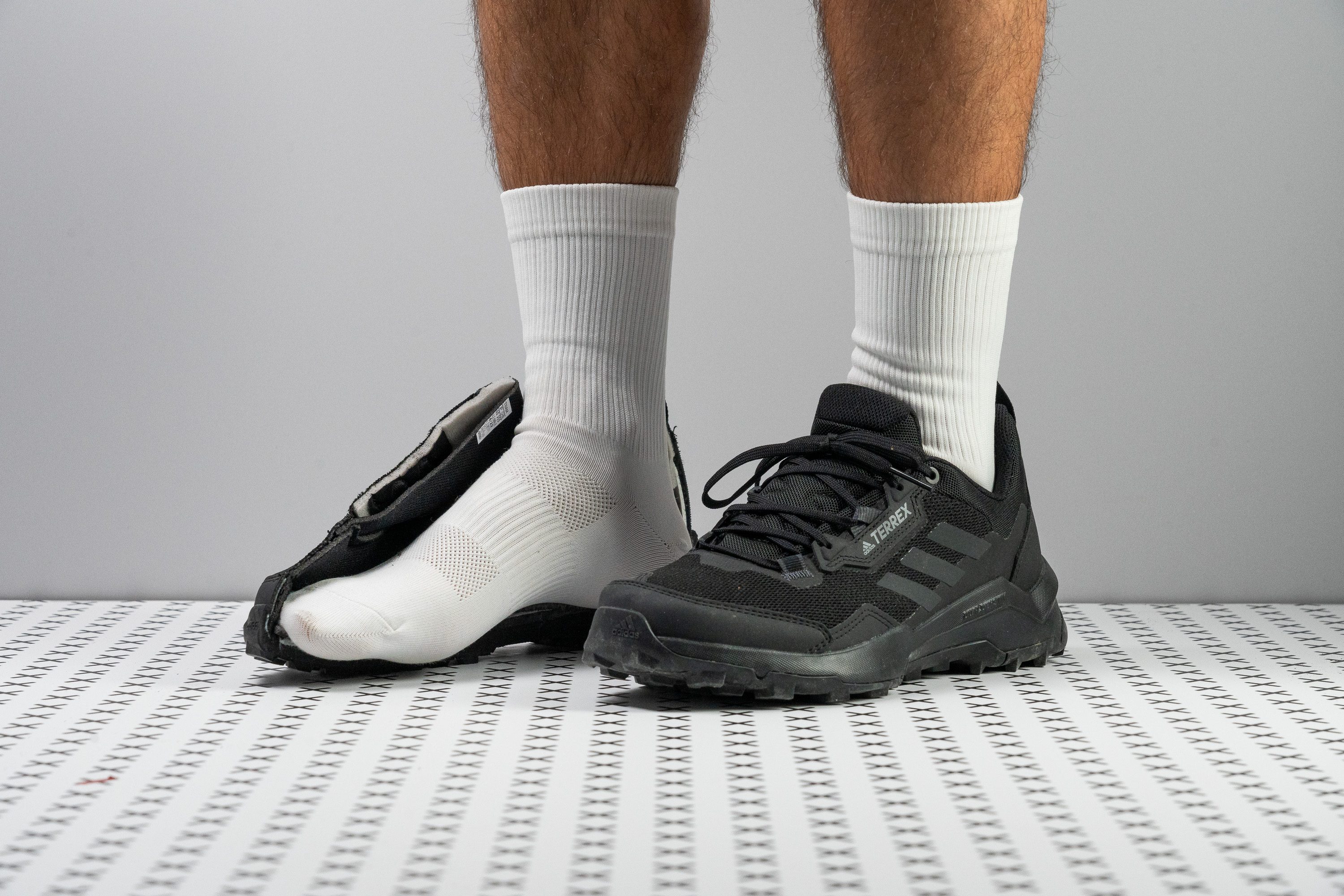








































What makes it the best?
The Adidas Terrex AX4 provides undeniable comfort and all-weather versatility while essentially keeping our strides in check. Our lab assessments show it offers breathability and stability in its light build and low £90 price. For reference, the average hiking shoe costs £140, making the Terrex AX4 our most budget-friendly plantar fasciitis hiking shoe.
The platform felt very supportive, with its supportive base securing our footing. The Terrex AX4 offers the sweet spot of 4/5 in terms of torsional rigidity, preventing ankle twists without feeling too stiff.
When it comes to bending our feet, it has a lot of give, emerging 22.4% more flexible than average and boosting a natural feel. Even at the end of a long day, our legs didn’t feel trashed because of its unassuming build of 13.4 oz (379g).
This shoe can handle shifting weather, offering enough ventilation when it gets warmer and some water-resistance against drizzles and morning dew. We tested the shoe in our smoke test, and it received a solid 3/5 rating, which is high since hiking shoes only average 2.4/5.
Sadly, its narrow toebox causes pressure when our feet start to swell. We recommend getting a half-size up for a more comfortable fit.
Pros
- Excellent value for money
- Feels like a trail running shoe
- Breathable
- Water-repellent
- Excellent grip
- Durable for the price
- Stable platform
- Contains recycled materials
Cons
- Lacks toe protection
- Flimsy insole
- Aggressively tapered toebox
The purpose of this guide is to educate about the features of hiking shoes, not to give medical advice.
In this guide, we will not focus on the causes and rehabilitation but on the shoes and why some features can help with the pain and the overall condition.
Plantar fasciitis and hiking
You might have experienced very sharp heel pain while hiking. Or it happened a day after a demanding hike and you’re not sure where it came from. Plantar fasciitis can be one of the causes and definitely not the only one!
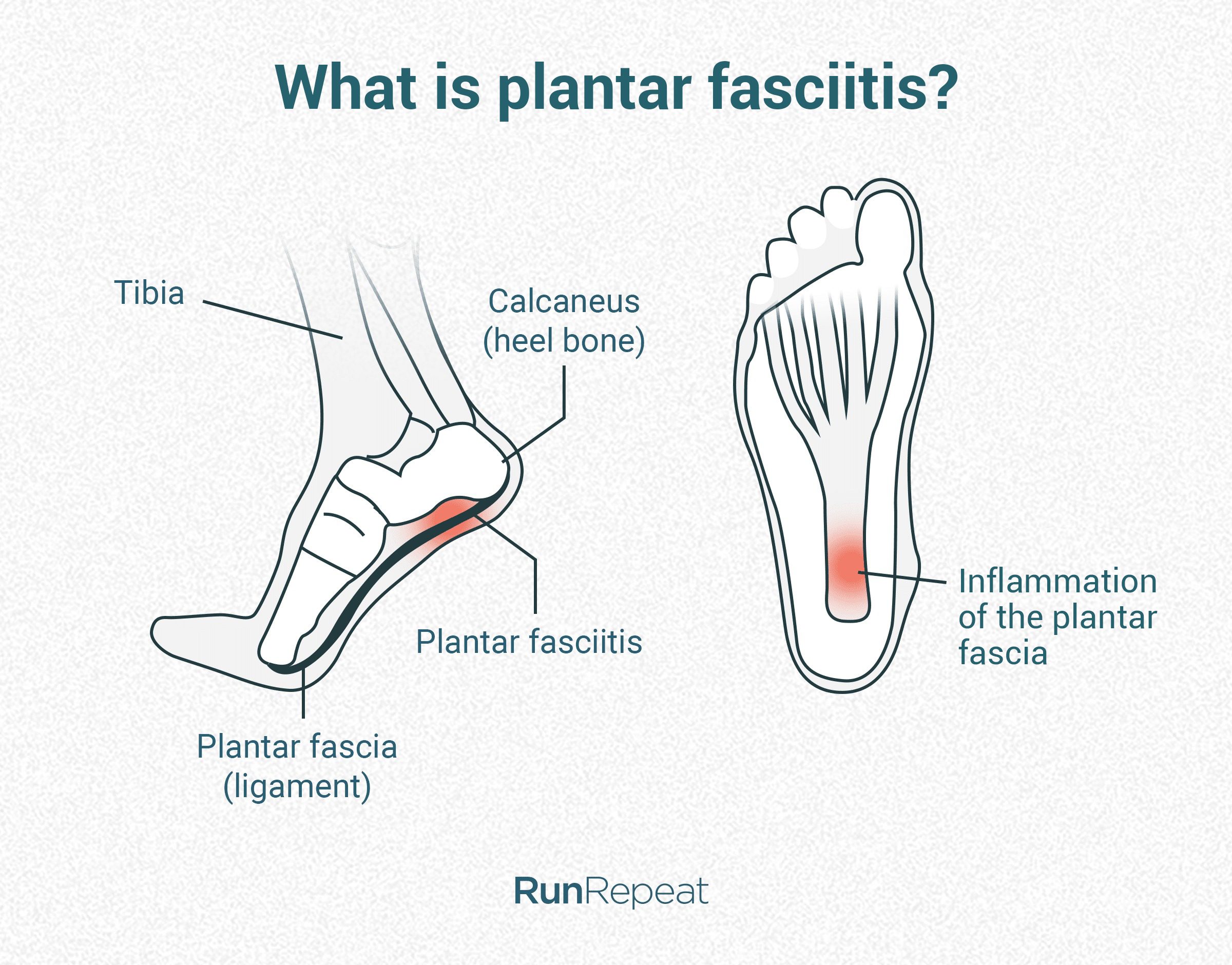
If it is, it means your plantar fascia is inflamed. It's the fascia that connects your heel to the ball of the foot and creates the arch below the foot. It gets inflamed due to overuse or overstretching. What helps here, when it comes to hiking shoes, is stabilising the heel so that it does not have to do any extra work!
If you're struggling with heel pain, we recommend visiting a specialist first, a PT or a podiatrist. Plantar fasciitis, like the majority of other foot conditions, is about rehab (and rest) first. Then, shoes.
5 features to look for in hiking shoes for plantar fasciitis
Hiking shoes for plantar fasciitis basically need to stabilise the foot and prevent any unnecessary movement, however small and in whichever direction. To accomplish that, we recommend these 5 hiking shoe features:
- Shock absorption of 100 SA or more, or, as many like to say, use cushioned hiking shoes. Minimalist hiking shoes are not recommended. They put much more force on the foot muscles and plantar fascia and we want to avoid that.
- Not-too-soft platforms. Fortunately, the majority of hiking shoes are not plush, so this one is easy. Firmer midsoles prevent unnecessary foot movement.
- Torsionally rigid platforms. We suggest those that scored 3, 4, or 5/5 on our tests. Just like firmer midsoles, rigid platforms help because they don’t make our feet work extra to find balance while hiking over sharp debris or similar surfaces that would twist the shoes. We don’t want any wobbling when dealing with plantar fasciitis.
- Heel to toe drop of 8mm and higher. This is important because higher heel drop utilises higher leg muscles and, therefore, relieves the plantar fascia of additional stress.
- Stiff heel counters (again, we recommend the 3-5 range based on our lab tests) which stabilise the heel in place.
Below, we take a dive into each of these features, how we test for each, and how to recognise hiking shoes that have them all.
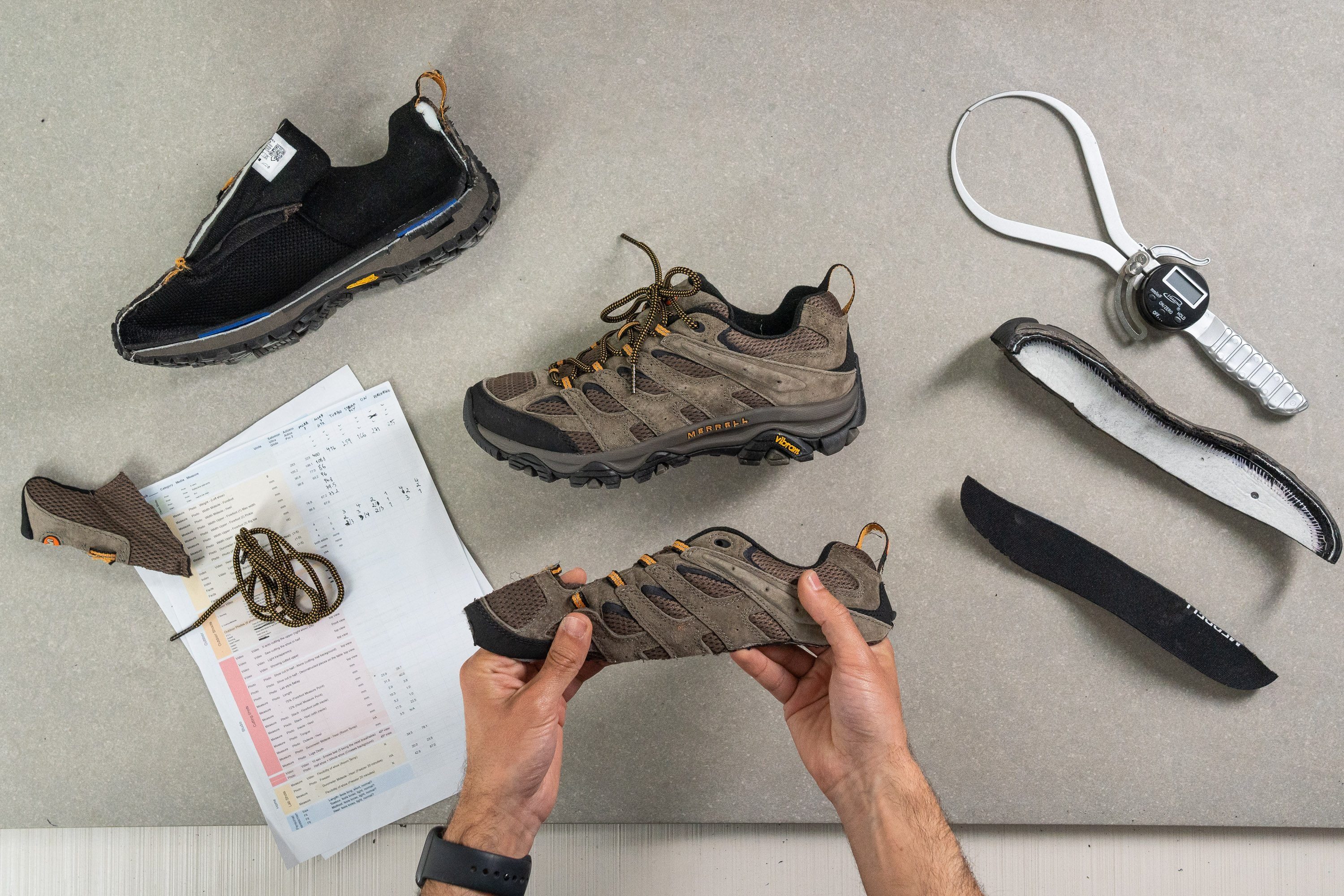
Best cushioning for plantar fasciitis: shock absorption lab test
If you have plantar fasciitis, it’s best to avoid hiking in minimalist or barefoot hiking shoes. Those shoes are too flexible and sometimes even too soft. To experience the extra support that’s needed when dealing with plantar fasciitis, cushioning is the way to go.
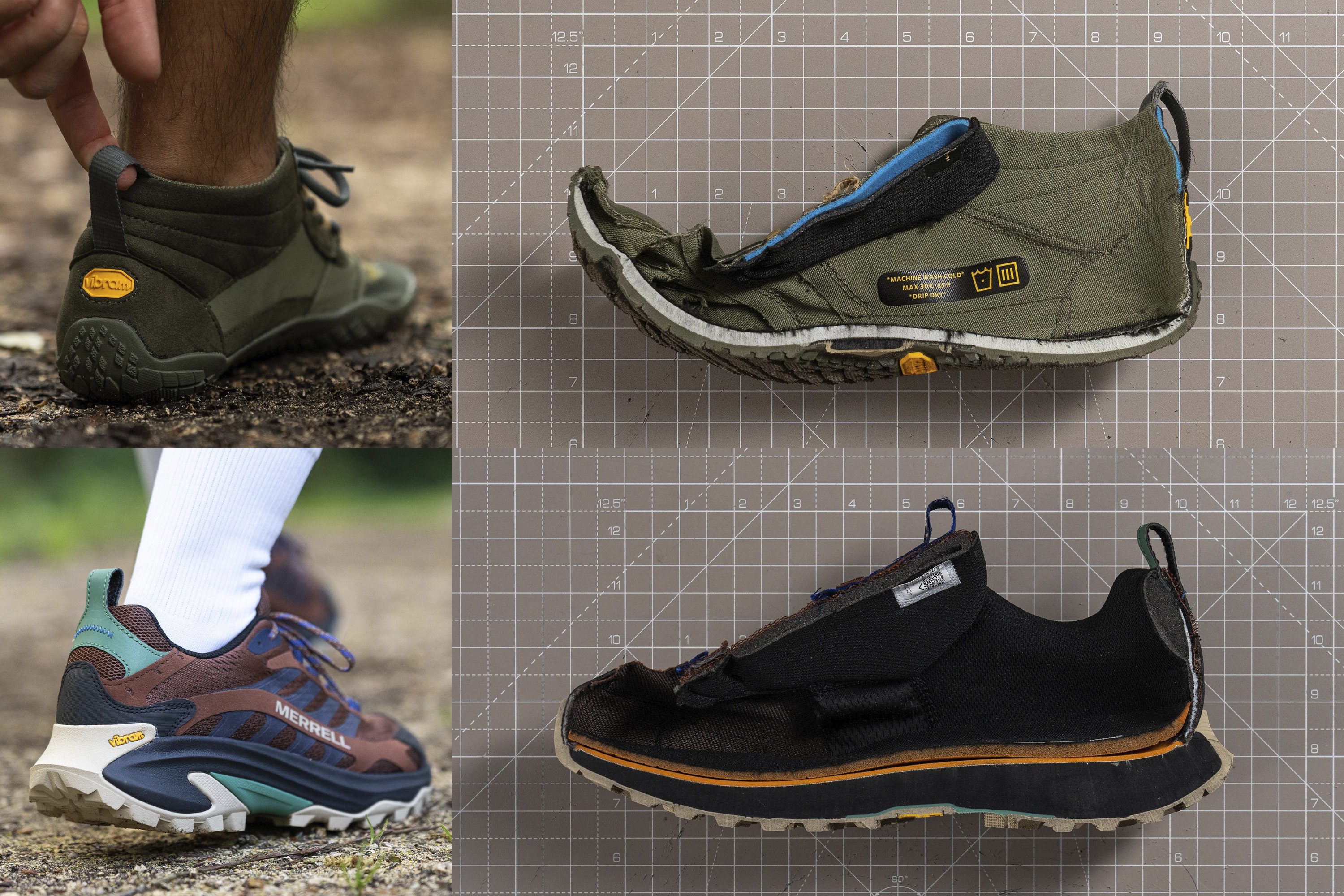
Cushioning is important because it's there to protect our feet. Shock absorption is the midsole's capability to dampen the impact forces. As if dealing with plantar fasciitis wasn't enough, why put more stress on the feet and legs? That's why we recommend looking for hiking shoes with medium-to-high shock absorption. In numbers, this translates to 100 SA or more.
To test this feature, we follow the ASTM F1976 13 methodology. This means that we drop an 8.5kg mass from a height of 5 cm, with a total energy input of 5 J. We drop this mass exactly on the spot that marks 12% of the inner shoe length. This is also the place where we measure the heel stack height according to World Athletics guidelines, except that the stack height test is done on shoes cut in half.
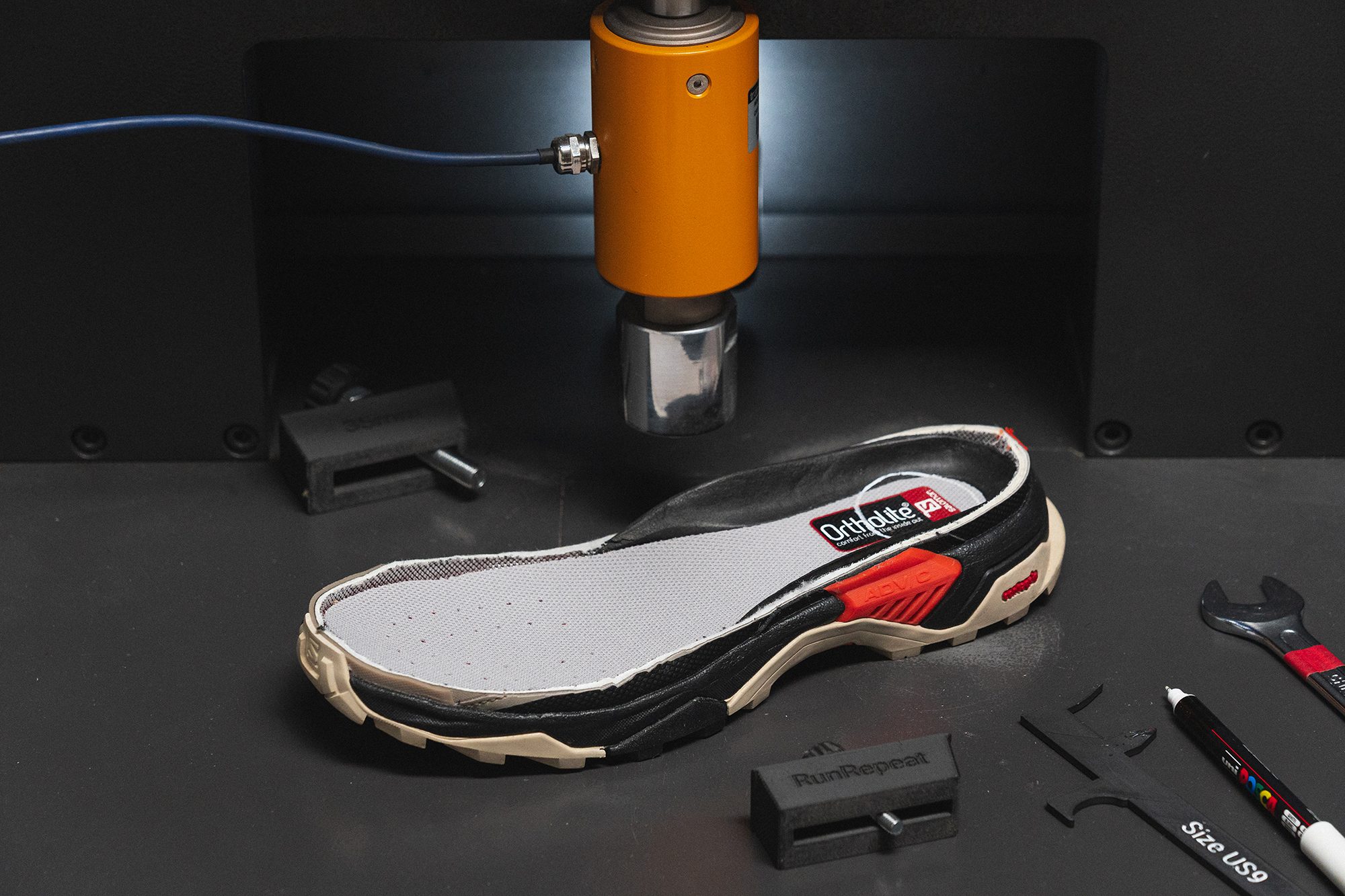
Say no to plush midsoles if you have plantar fasciitis
Midsoles that are too soft allow our feet to sink in and that usually creates the cloud-like feel many hikers talk about. However, this softness may make your feet work more, which is why we recommend avoiding it.
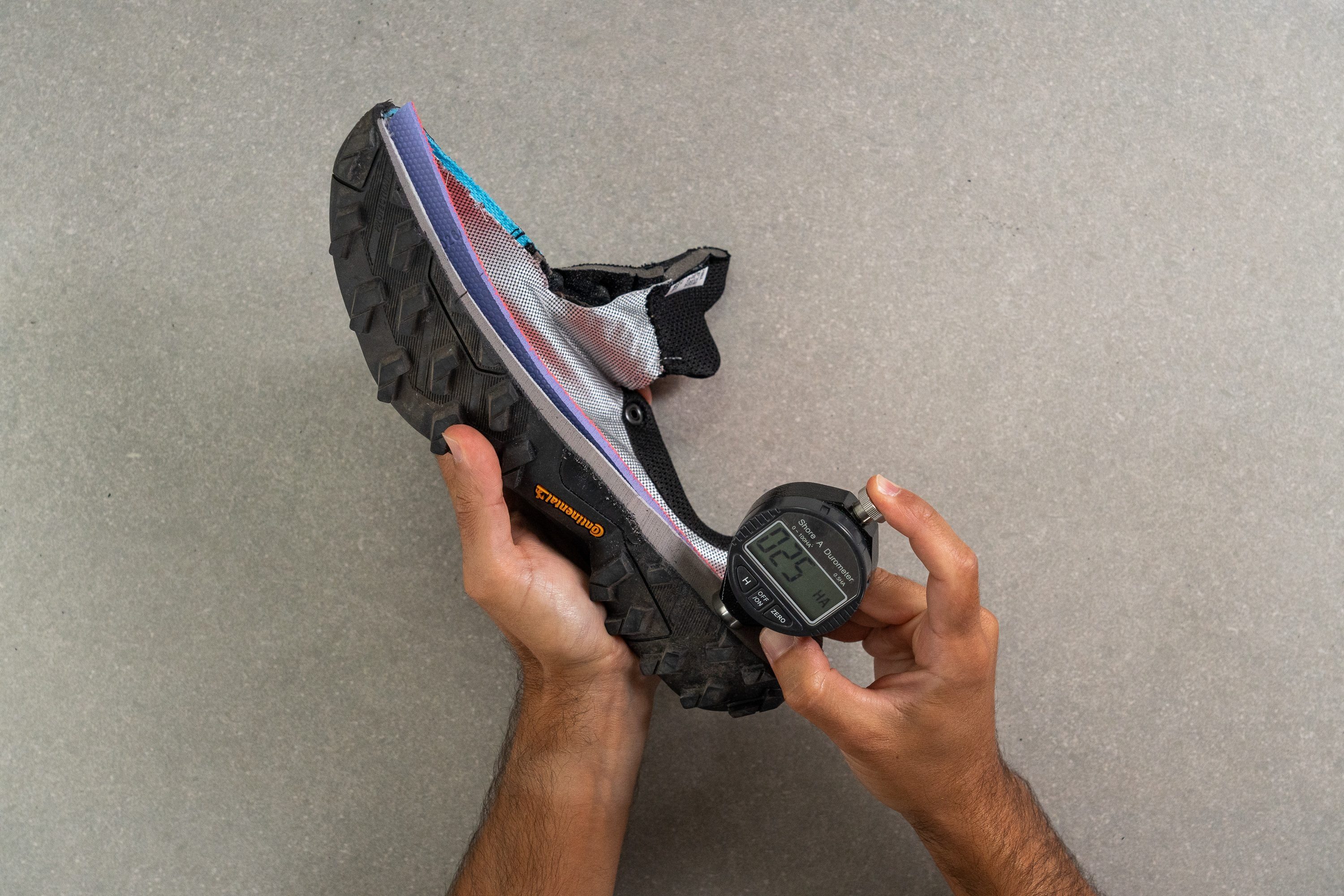
How to do that? Look for midsoles that scored at least 20HA on the softness test. Or, simply, avoid hiking shoes that feel very soft, like soft trail running shoes. It should not be a problem to find these shoes as the average midsole softness, per our lab tests, sits at 27.6 HA.
Rigid feels GREAT on demanding terrain
If you’re hiking on very flat terrain, hard-packed trails, basically no obstacles, rocks, or elevation, then you might be ok with somewhat flexible shoes. But, imagine this: you step on a branch or on a sharp rock. What happens? The shoe might bend and/or twist. And it’s normal that this happens, especially in running shoes.
But, if you’re dealing with plantar fasciitis, it’s best to avoid this and to choose a rigid platform. This way, your foot will not “follow” the shape of the platform that is bent and twisted, and therefore, your plantar fascia will be spared from extra stress.
For plantar fasciitis, we recommend shoes that scored 3/5, 4/5, or 5/5 on our torsional rigidity test.
Importance of heel drop for plantar fasciitis
Heel to toe drop is a very important topic that is often overlooked. We wrote an in-depth guide about it and, although it focuses on running shoes, it also explains the effects of heel to toe drop on the leg muscles.
We recognise 4 groups of heel drops and they all impact our legs differently:
- Zero-drop hiking shoes, where the forefoot and the heel lay at the same height. These hiking shoes utilise the foot muscles the most. They also ask for the longest adaptation period if you’re coming from, say, 10mm-drop hiking shoes.
- Low-drop hiking shoes where the heel is 1-4mm higher than the forefoot. These shoes activate the lower leg muscles the most (Achilles, ankle, calves).
- Mid-drop hiking shoes that have a heel drop of 5-8mm. These shoes will put the most stress on the knee and thighs.
- High-drop hiking shoes with a heel drop of 9mm and above. These shoes are best for plantar fascitis as they utilise the highest leg muscles (around the hips). Therefore, out of these 4 heel drop groups, they are using the foot muscles, plantar fascia included, the least!
In hiking, heel-to-toe drop is higher than in trail running shoes, so there aren’t many low-drop or zero-drop options. The average heel drop in hiking shoes is 11.1mm, while in trail running shoes it sits at 7.6mm (at the moment of writing this guide). Or, at least, not as many as in the trail running world. Still, we recommend high-drop hiking shoes to hikers who are experiencing plantar fasciitis.
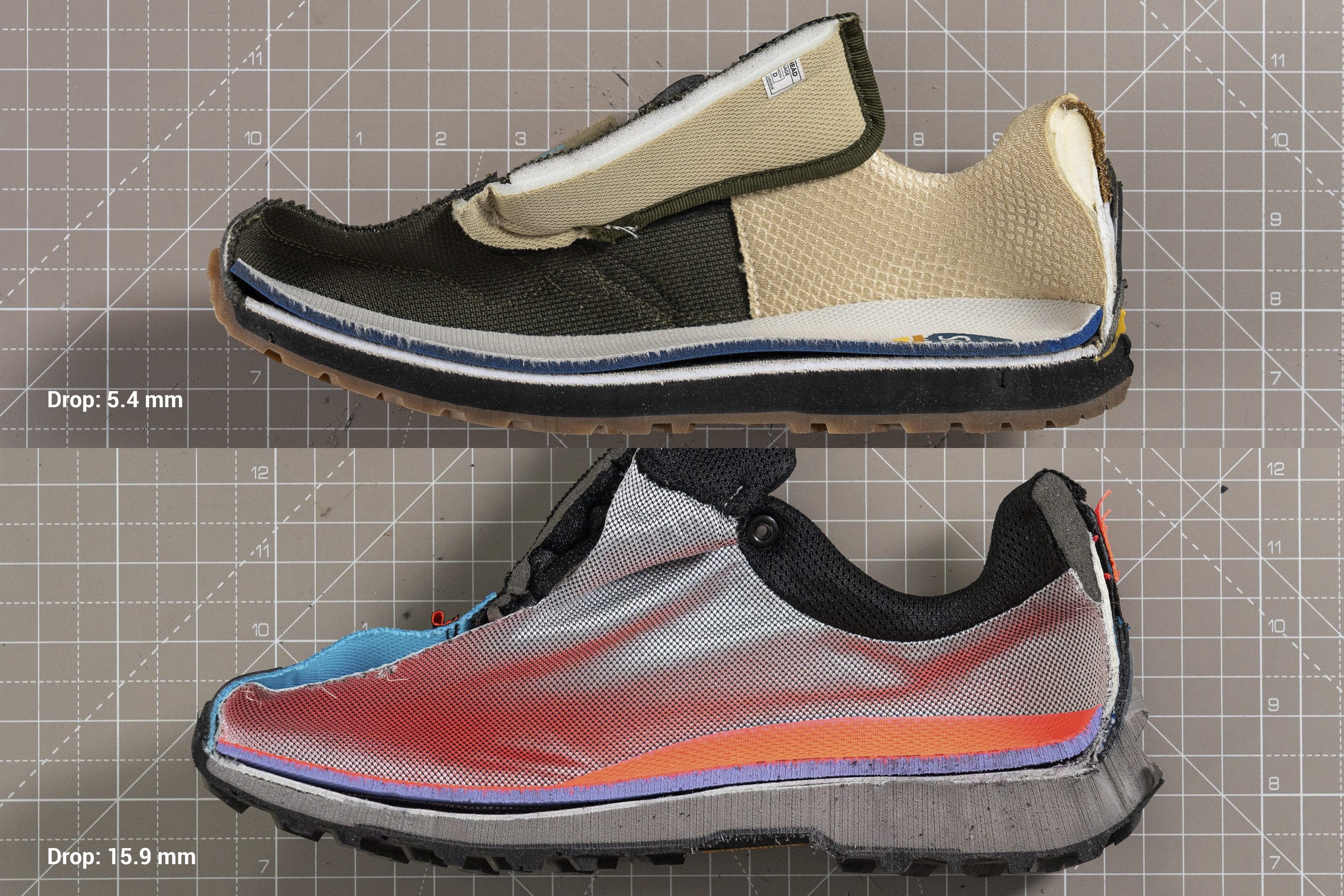
We calculate the heel drop thanks to our precise stack height measurements. Heel drop = (heel stack height) - (forefoot stack height). Many brands advertise wrong heel drops and we rely on our numbers as we honour the WorldAthletics guidelines when measuring the stack heights.
Your heels will love stiff heel counters!
Hikers with plantar fasciitis experience heel pain. What often feels great is a stiff heel counter. It stabilises the heel so it is locked in place and there’s no excessive motion.
this heel counter scored 1/5 meaning it is very flexible
this one scored 5/5 meaning it is very stiff
What makes the heels stiff? There’s usually a stiff material inserted between 2 layers, which creates an internal heel counter. We can also sometimes see an external heel counter when a stiff material is glued on the outside to stabilise the heel.
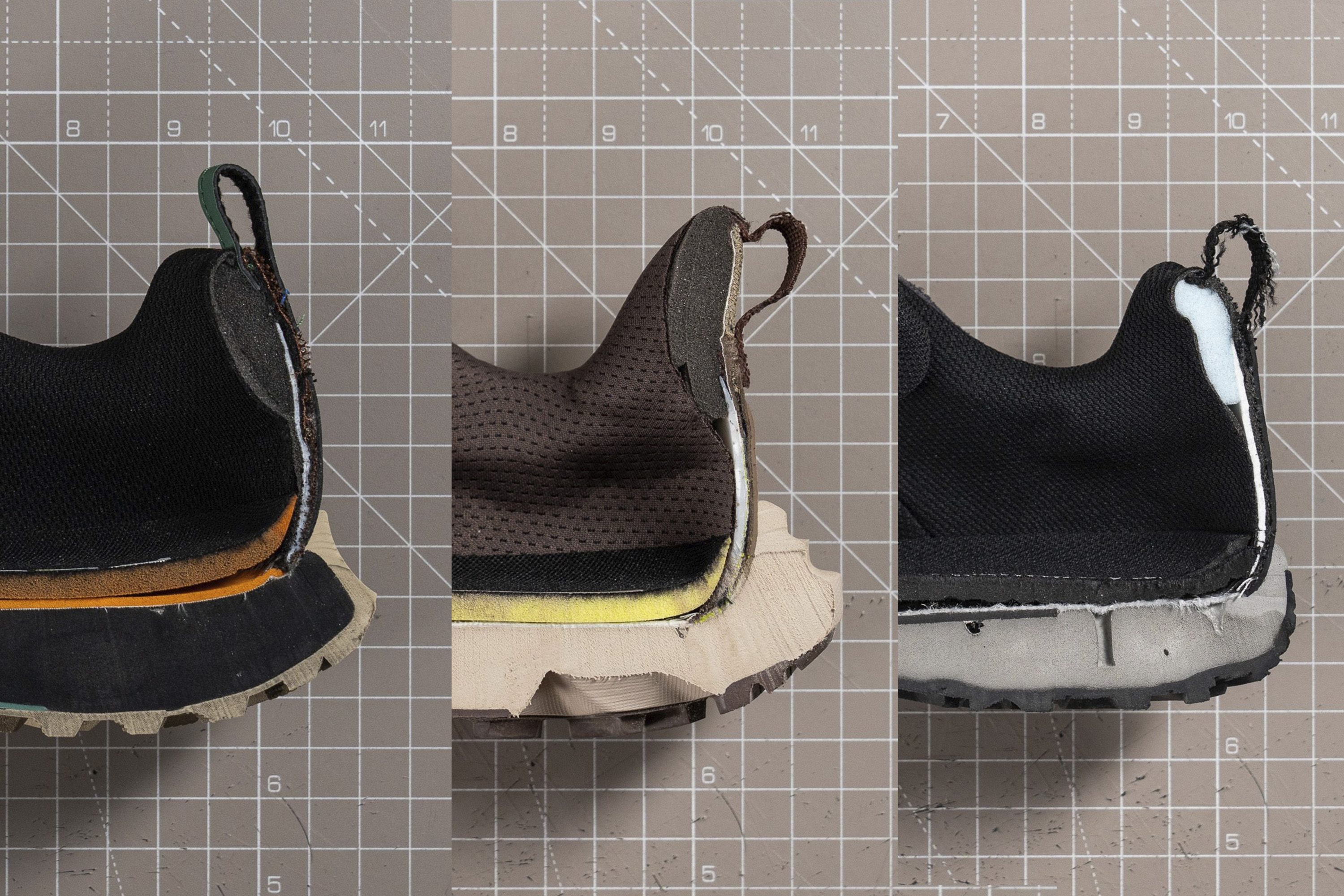
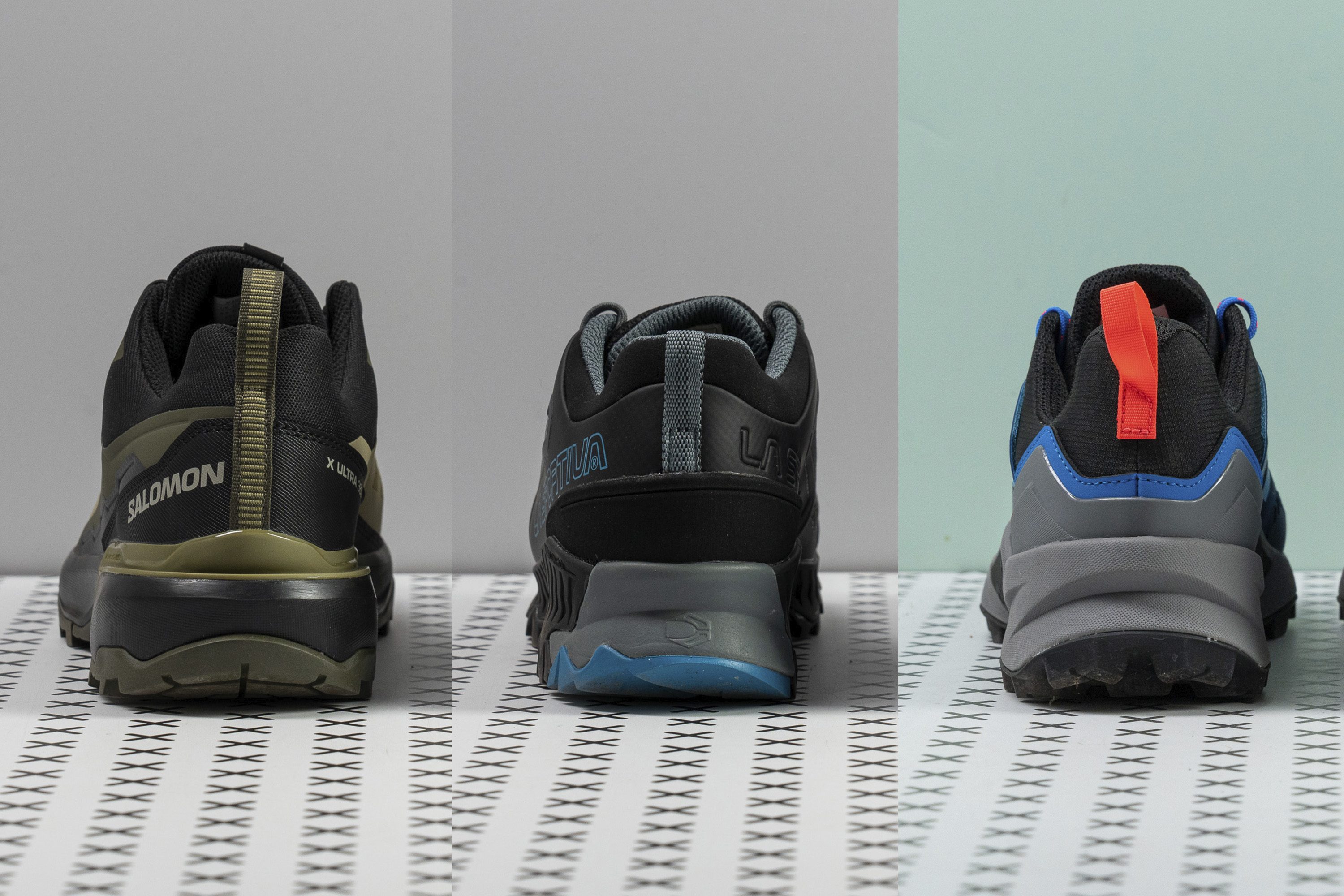
For plantar fasciitis, we recommend heel counters that scored 3/5, 4/5, or 5/5 on our stiffness assessment.
You might also enjoy padded heel counters
There are hiking shoes that fulfil all the requirements listed above but come with stiff and harsh heel counters. This means that the materials are too rough on your heels to the point of causing hot spots.
To avoid this, we suggest looking for padded heels. Your heels should be cosy!
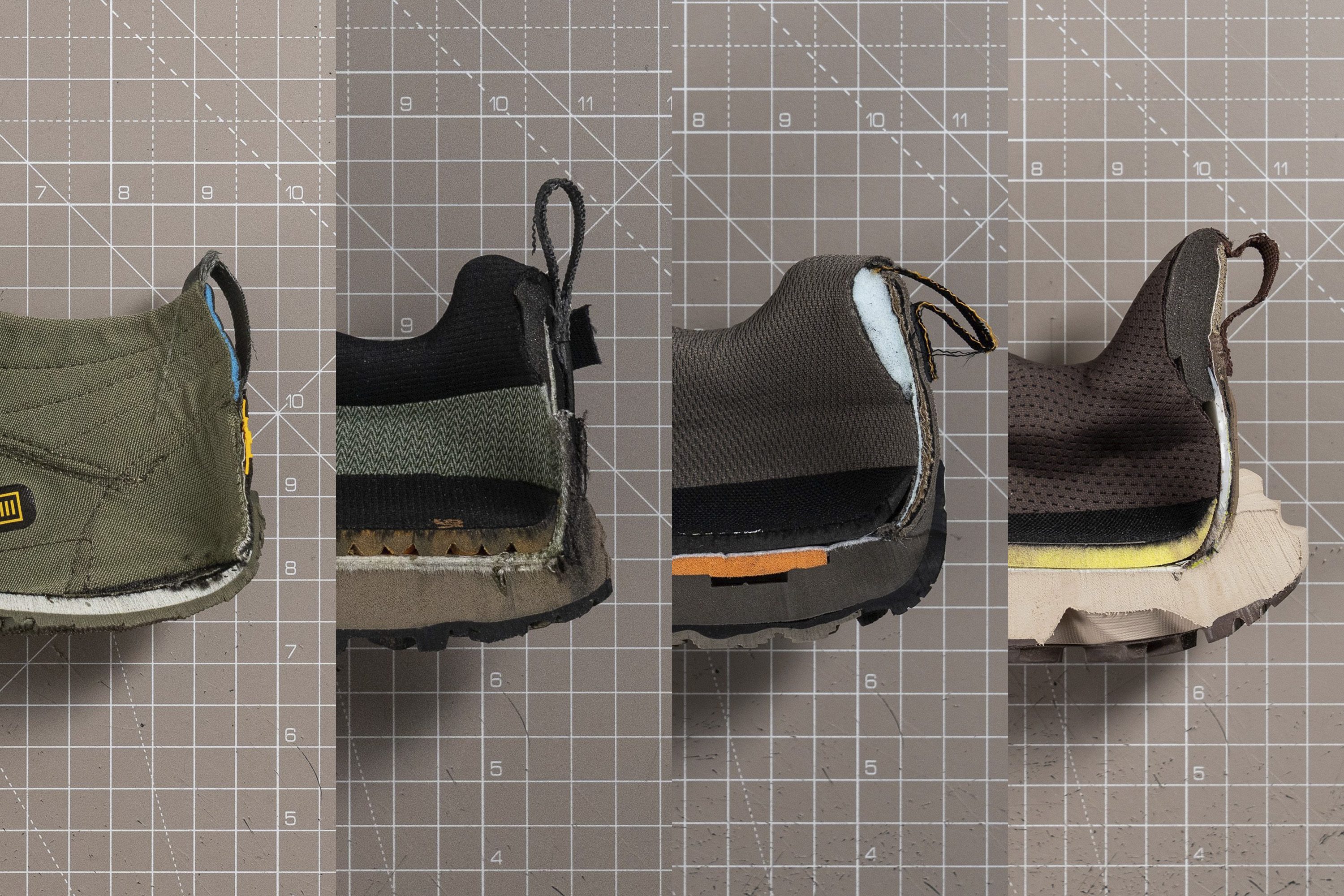
Where you plan to hike dictates the grip to look for
Even if you find hiking shoes that fulfil all the above-mentioned criteria, they still might have lugs that are too shallow or too deep for your preferences. To avoid that, it’s best to decide which terrain you’re buying the hiking shoes for and act accordingly.

Now, the deeper the lugs, the better the grip. But, that’s not the whole story. We should also pay attention to the shape of the lugs, their orientation, and their number (also distance from one another).
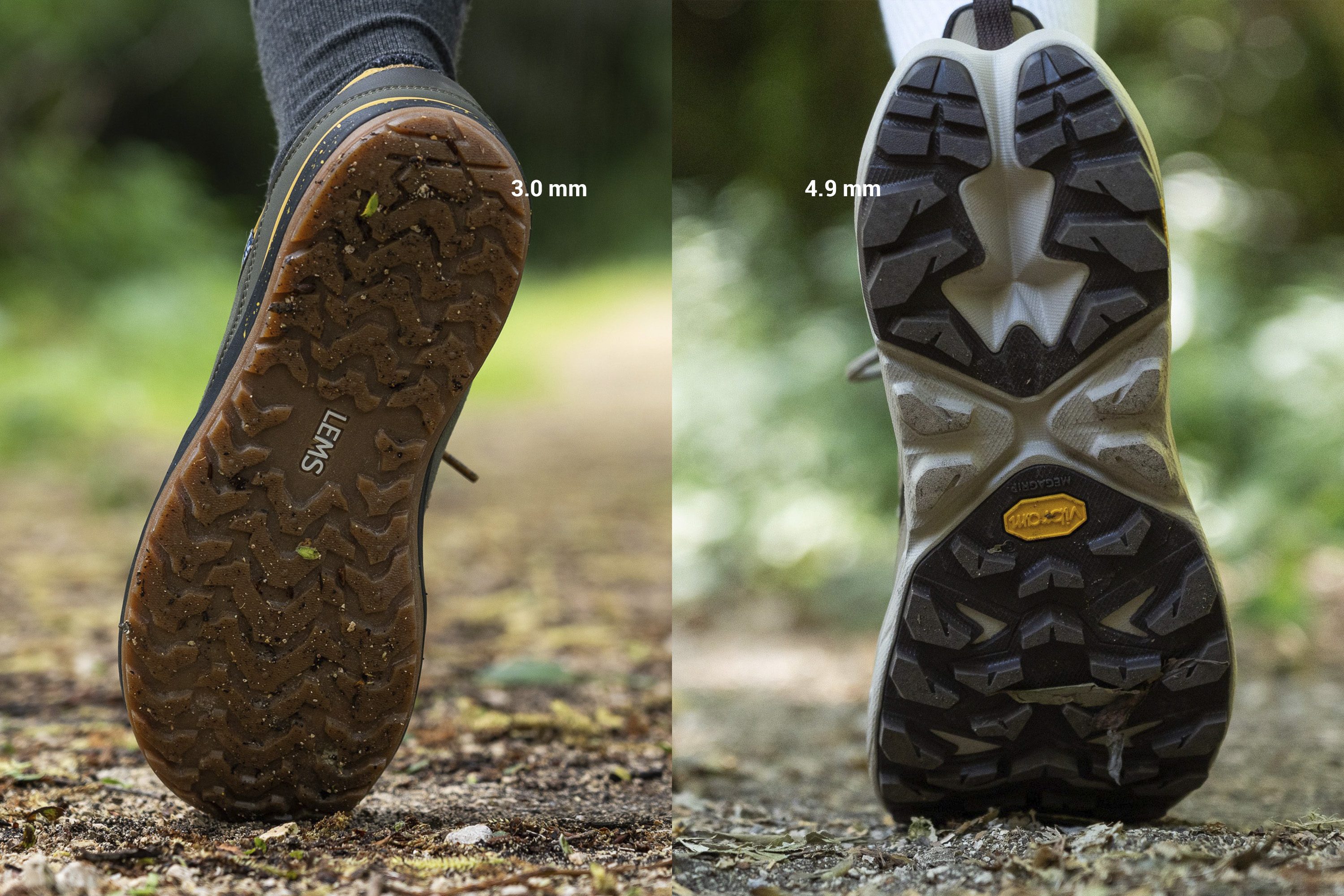
And, when deciding on which terrain a hiking shoe is good for, we also take into account how the shoe performed, maybe it is too chunky or too flexible for technical terrain (even if it has very deep lugs). And some shoes, even with shallower lugs, perform well on moderate terrain thanks to their sturdy construction.
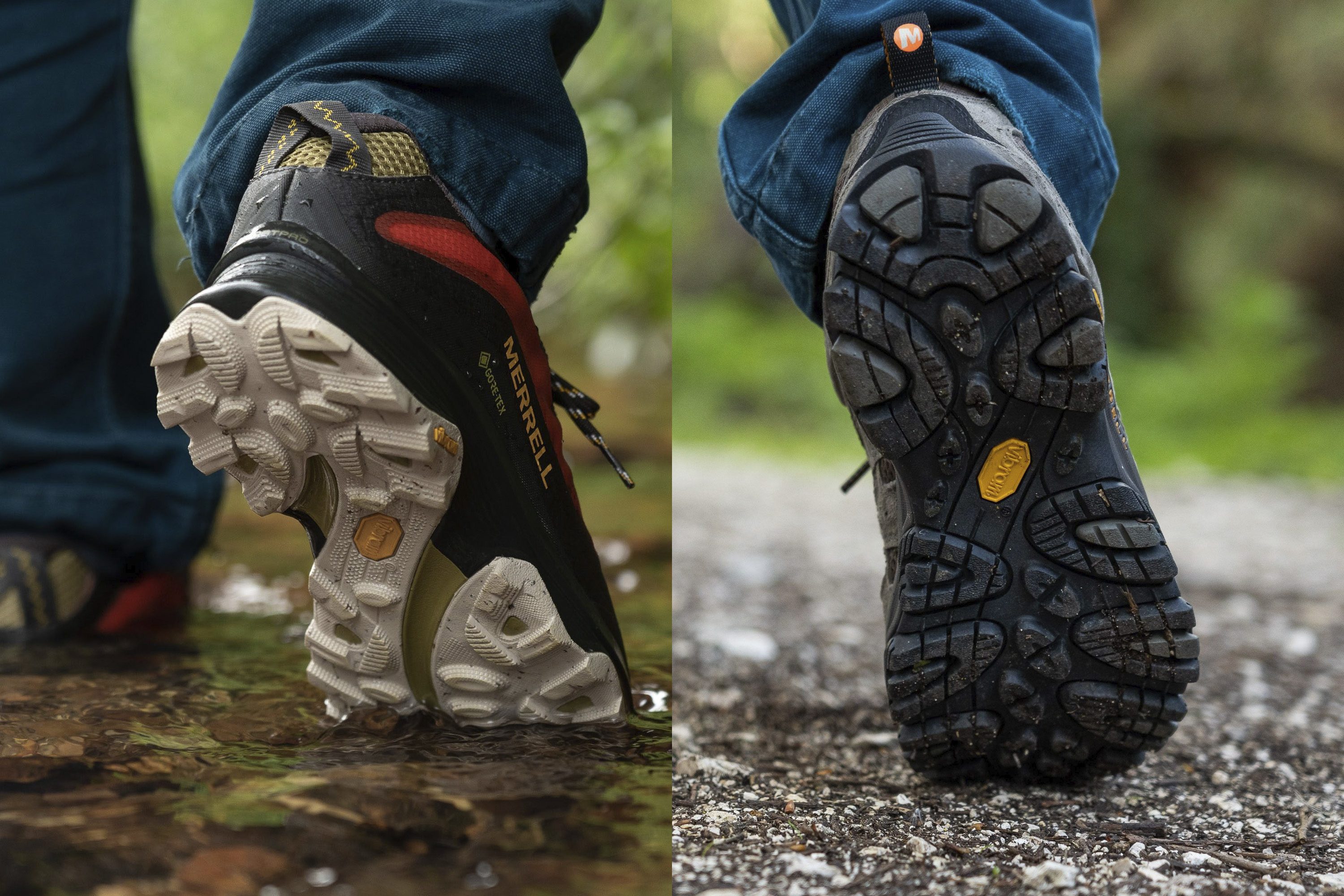
Up until now, we’ve also seen that, in most cases, softer rubbers are stickier and more flexible, while the harder ones are more durable and protective.




